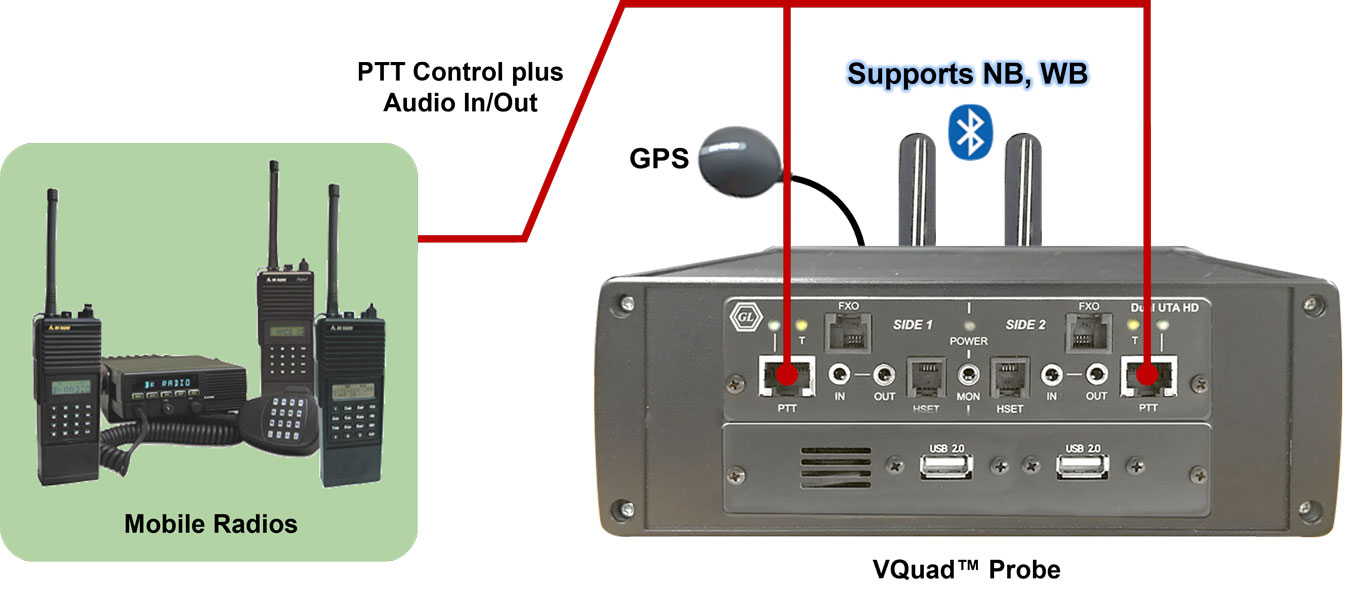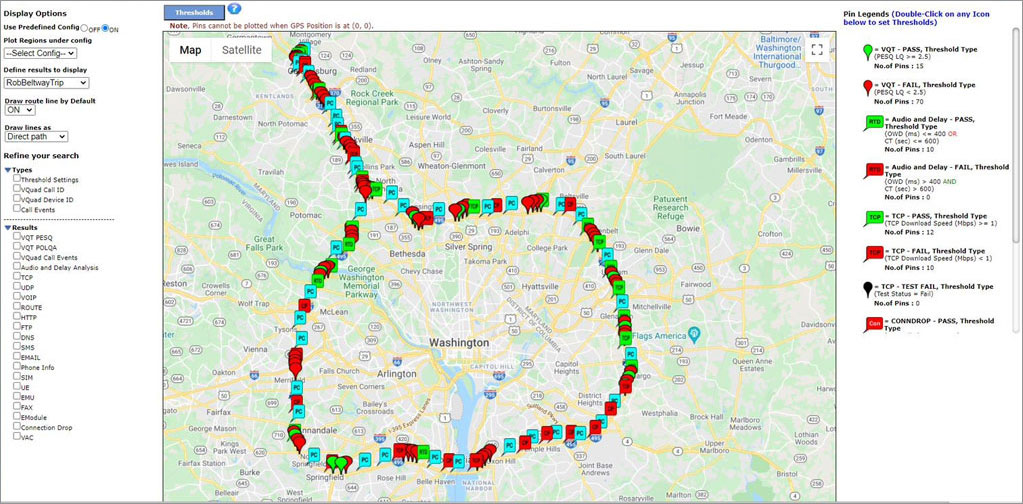Validation and Regression Testing for Emergency Services Mobile Networks
Welcome to the latest issue of GL's Newsletter providing information into our solution for automated testing of Voice Quality and Coverage for Emergency Services in wide-area mobile networks. Validation and Regression tests can run continuously to generate thousands of measurements per day in various spaces.

Overview
Emergency services mobile networks include Land Mobile Radio Systems and often interface with the Public Switched Telephone Network (PSTN). These networks are used by police officers, firefighters, and other first responders and must reliably transmit audio between endpoint devices.
In responding to emergencies, clear communication between personnel is mandatory. Poor voice quality and long latency can lead to miscommunication resulting in catastrophic consequences such as loss of life and damage to critical infrastructure. Clear voice quality is needed not just outdoors but in vehicles, aircraft, buildings, and underground as well.
Objectively measuring end-to-end voice quality in a wide range of scenarios spanning different locations can be challenging but is essential. GL recently released a whitepaper proposing a systematic way to test voice quality over emergency services mobile networks. The resulting testing will identify gaps in coverage, potential sources of interference, and other obstructions. This will allow the users to identify and eliminate vulnerabilities in their emergency services mobile networks and better protect their citizens.
The results can be mapped to identify areas of poor mobile radio coverage and poor voice quality. By improving these spaces, police officers, firefighters and first responders can have confidence that they can communicate clearly in any circumstance and thus save lives.
Test Solutions
- VQuad™ Probe : A self-contained unit for voice, video, and data testing. It contains many physical interfaces for connecting to telecommunications endpoints such as radios, landline telephones, and cellular phones. The VQuad™ Probe includes the Dual Universal Telephony Adapter High Density (Dual UTA HD) which provides interfaces such as Bluetooth®, 2-wire Analog, 4-wire Analog, RJ-11, and PTT (Push to Talk for Mobile Radios). In addition, the VQuad™ Probe includes an embedded single board computer running Windows® 10 64-bit operating system.
- vMobile™ : A hand-held portable device that can connect to a single mobile radio and perform the same operations as the VQuad™ Probe. This solution is ultra-portable with a self-contained battery for ease of operation during walking tests. Using the onboard Wi-Fi, the vMobile™ can tether to a mobile phone for Wi-Fi connectivity while connecting to the vMobile™ Central Console for remote operation. The vMobile™ can also be controlled directly from any mobile phone using the installed vMobile™ Console app for running vMobile™ fully autonomously using scripts. In addition, the vMobile™ and VQuad™ Probe can work independently or together as part of a single end-to-end call.
- Indoor Tracking System (ITS) : This application works with VQuad™/vMobile™ as well as the GL Voice Quality Testing (VQT) software applications to track voice quality while walking within a building or in an underground location where GPS is not available. ITS allows the user to upload floor plans as a JPG before conducting the test, configure test points on the JPG, and traverse the space while indicating on the GUI as they pass each pre-defined point while automatically performing voice quality measurements during the walk test. As a result, the ITS can plot the voice quality test results directly on the floor plan and show the path the user took during the test. This allows the user to accurately identify locations within a building or underground where voice quality is degraded.
- VQT Software : Supports the next-generation voice quality testing standard for fixed, mobile, and IP-based networks using POLQA (ITU-T P.863) or PESQ (ITU-T P.862). The VQT analyzes the degraded (received) files and compares them with the reference (sent) files using ITU standard POLQA and PESQ algorithms.
- WebViewer™ : A web-based client for voice and data quality testing. WebViewer™ uses a simple web browser to display and access, in real-time, all results and events associated with the VQuad™ and VQT testing. Using the WebViewer™ one can query and filter results, generate custom reports, schedule reports to be generated and emailed, plot results within Google Maps, and obtain the network status of all deployed devices (including VQuad™ Probes and vMobile™ devices).

Voice Quality Scores on the Beltway around Washington D.C., USA
 Back to Newsletter Index Page
Back to Newsletter Index Page